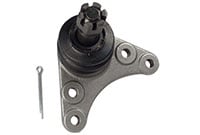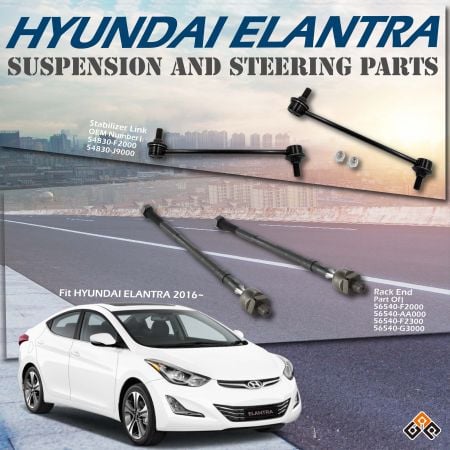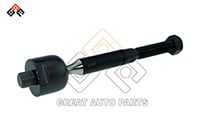What Do Control Arms Have to Do with Your Company’s Bottom Line?
Control arms are key parts of your vehicle's suspension system. They help with stability, proper alignment, and smooth handling, which makes them vital for both safety and driving comfort. Let’s break down the role of control arms, their connection to the steering, symptoms of wear, and how their design varies across differnt types of vehicles.
What Is a Control Arm, and How Does It Contribute to Vehicle Suspension
Control arms link the wheels to the car’s frame and act as pivot points, enabling the wheels to move up and down while keeping their alignment. Here’s how they contribute:
| Function of Control Arms | Description |
| Adapting to Road Conditions | Control arms allow the wheels to move up and down in response to road irregularities, reducing impact on the vehicle’s body. |
| Maintaining Tire Contact | Control arms keep the tires consistently in contact with the road, improving traction, stability, and control. |
| Carrying the Weight | Control arms bear and distribute the vehicle's weight evenly across the suspension, maintaining balance and integrity. |
Does the Control Arm Connect to the Steering
While control arms aren't directly connected to the steering system, they play a big role in keeping it stable:
- Maintaining Alignment
Control arms help keep the wheels in the right position relative to the vehicle. This ensures key angles are aligned correctly, which is crucial for stability, especially when turning or cornering. - Influencing Stability
Proper alignment means the wheels point in the right direction, making the car easier to handle. Worn control arms can lead to misalignment, which causes steering issues and makes the vehicle less predictable.
How Do Control Arms Support the Overall Suspension
Control arms play a big part in ensuring your vehicle’s suspension works as it should:
| Role of Control Arms in Suspension | Description |
| Distributing Weight and Keeping Stability | Control arms help distribute the vehicle’s weight and maintain stability during turns and braking. |
| Absorbing Shocks | They allow the wheels to move up and down, reducing the impact of bumps on the car and improving ride comfort. |
| Keeping Traction | Control arms ensure the wheels stay in contact with the road, which is essential for traction during acceleration, braking, and cornering. |
What are Common Signs of a Worn or Damaged Control Arm
It’s crucial to catch early signs of wear or damage to avoid costly problems. Here are a few key indicators:
| Common Signs of a Worn or Damaged Control Arm | Description |
Unusual Noises | Clunking or popping sounds when driving over bumps or turning, often due to worn-out bushings or ball joints. |
Vibrations in the Steering Wheel | A failing control arm can cause vibrations in the steering wheel, especially at higher speeds. |
Uneven Tire Wear | Misalignment caused by a damaged control arm can lead to uneven tire wear. |
Poor Handling | If the vehicle feels unstable or pulls to one side, it could indicate a worn control arm. |
Why Do Control Arms Fail, and How Can You Prevent It
Several things can cause control arms to wear out:
| Reasons for Control Arm Failure | Description |
| Normal Wear | Over time, bushings and joints wear out due to constant use. |
| Rough Driving Conditions | Driving on rough roads or hitting potholes puts extra stress on the control arms. |
| Rust | Water and road salt can lead to corrosion, weakening the control arms. |
Prevention Tips:
- Schedule regular check-ups to catch early signs of wear.
- Make sure your wheels are properly aligned.
- If you live in an area with harsh winters, inspect for rust regularly.
Can You Keep Driving with a Damaged Control Arm
Driving with a damaged control arm is risky. Here’s why:
| Risks of Driving with a Damaged Control Arm | Description |
| Loss of Control | A faulty control arm can cause alignment issues, making the car harder to handle, especially during turns or sudden maneuvers. |
| Uneven Tire Wear | Misaligned wheels lead to faster tire wear, increasing the risk of a blowout if left unchecked. |
| Stress on Other Parts | A damaged control arm puts additional strain on other suspension parts, potentially leading to more costly repairs. |
Should You Replace Control Arms and Bushings Together
While it’s not always necessary, replacing both can be a good idea in these cases:
- Worn Bushings
If the bushings are in bad shape, replacing them along with the control arm can restore proper handling. - Saving Money Long-Term
Changing both at once can help you avoid repetitive labor costs and future alignment problems.
Keep Your Suspension in Top Shape
Control arms are key to your vehicle’s suspension, helping to maintain stability, alignment, and overall handling. By staying on top of maintenance and replacing worn parts, you can keep your car running smoothly and safely.
At Great Auto Parts, we specialize in high-quality control arms , tie rod ends, and suspension components designed to meet the needs of a wide range of vehicles. Whether you’re looking for reliable parts for trucks, passenger cars, or off-road vehicles , our team of experts is here to provide tailored solutions that ensure long-lasting performance and safety. Contact us today for expert advice and premium automotive parts to keep your fleet or vehicle in top condition!




